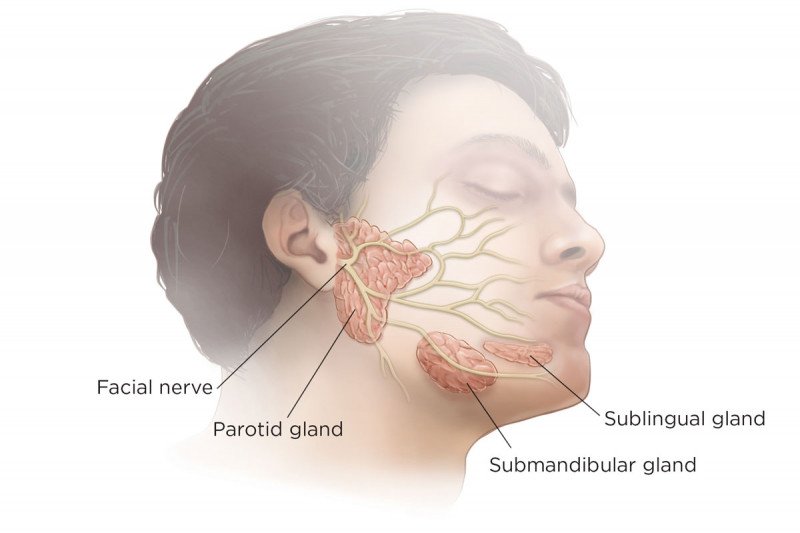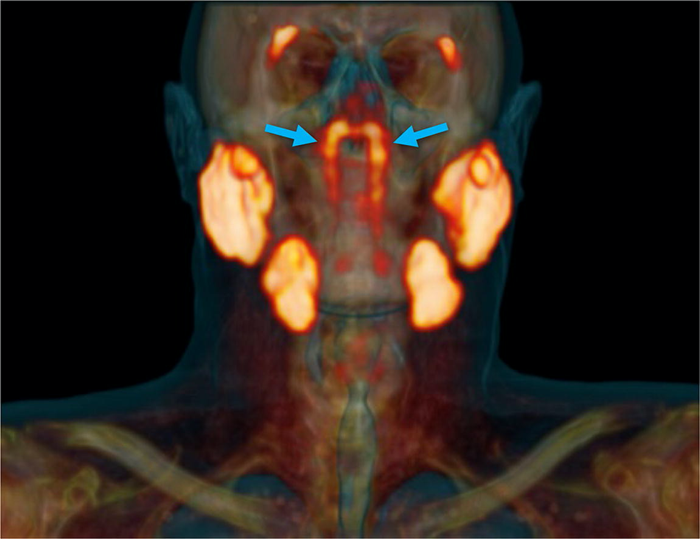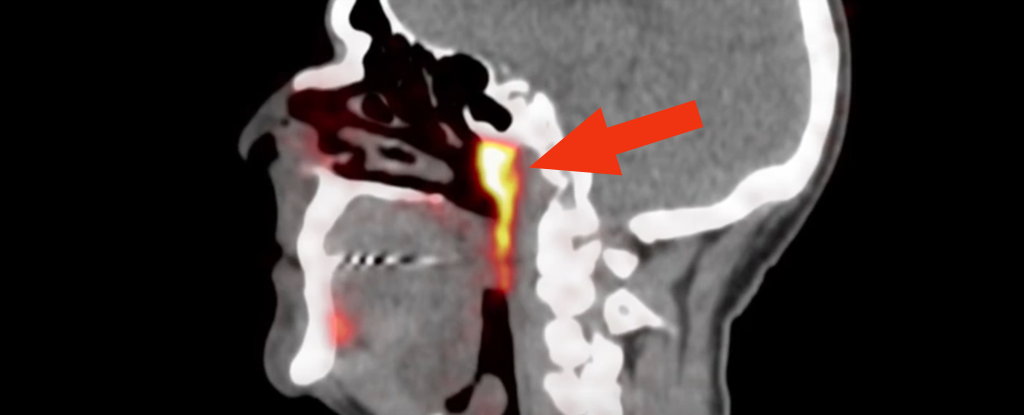The Human Body has 3 pairs of salivary glands located in the body. These are Parotid, Submaxillary and Sublingual. Parotid salivary gland is present on the masseter muscle and can be felt on the surface of the skin of the jaw. Rest of the glands are located a bit deep, but can be palpated.
Our body contains a pair of previously overlooked and clinically relevant nasopharyngeal salivary glands, according to new research led by the Netherlands Cancer Institute and the University of Amsterdam. Sparing these newly-identified glands, named the ‘tubarial glands,’ in patients receiving radiotherapy may provide an opportunity to improve their quality of life.
There are 2 types of glands in the body, Major and minor. Parotid, submandibular and submaxillary are considered as MAJOR Salivary glands, where as thousands of minor salivary glands are distributed along the nasopharynx and oral mucosa. These glands produce the saliva required for mastication, swallowing, digestion, tasting and dental hygiene.
Scientists have discovered a new organ: a set of salivary glands set deep in the upper part of the throat.
This nasopharynx region — behind the nose— was not thought to host anything but microscopic, diffuse, salivary glands; but the newly discovered set are about 1.5 inches (3.9 centimeters) in length on average. Because of their location over a piece of cartilage called the torus tubarius, the discoverers of these new glands have dubbed them the tubarial salivary glands. The glands probably lubricate and moisten the upper throat behind the nose and mouth, the researchers wrote online Sept. 23 in the journal Radiotherapy and Oncology.
The arrows show the tubarial salivary glands. "The recently introduced molecular imaging modality of positron emission tomography/computed tomography with radiolabeled ligands to the prostate-specific membrane antigen (PSMA1 PET/CT) can visualize salivary glands with high sensitivity and specificity,” said lead author Dr. Matthijs Valstar, an oral and maxillofacial surgeon in the Department of Head and Neck Oncology and Surgery at the Netherlands Cancer Institute and the Department of Oral and Maxillofacial Surgery at the University of Amsterdam, and his colleagues from the Netherlands.
The researchers confirmed the presence of tubarial glands in PSMA PET/CT scans of 100 patients (99 male, one female; median age 69.5; range 53-84) and the tissue of two human bodies.
But the main area of concern is where the radiation has effects on these glands. These glands might be damaged due to the effects of radiation and thus may lead to preneoplastic changes or any other complication.
“For most patients, it should technically be possible to avoid delivering radiation to this newly-discovered location of the salivary gland system in the same way we try to spare known glands,” Dr. Vogel said.
This study was aimed at detecting the occurrence of prostate cancer in males, but they found out that majority of their subjects had this new salivary glands. They also dissected that nasopharynx region from two cadavers from a human body donation program and found that the newfound region consisted of mucosal gland tissue and ducts draining into the nasopharynx.
"Our next step is to find out how we can best spare these new glands and in which patients," Vogel said. "If we can do this, patients may experience less side effects, which will benefit their overall quality of life after treatment."
WARNING: This is a blog which is based on pure research. No false information is being conveyed.
Contact us - @_uzumakisenpai_ @creativesparkblogs
Author - Dr. Yogiraj Karambelkar





Knowledge.exe UPDATED 👍👍👍
ReplyDelete